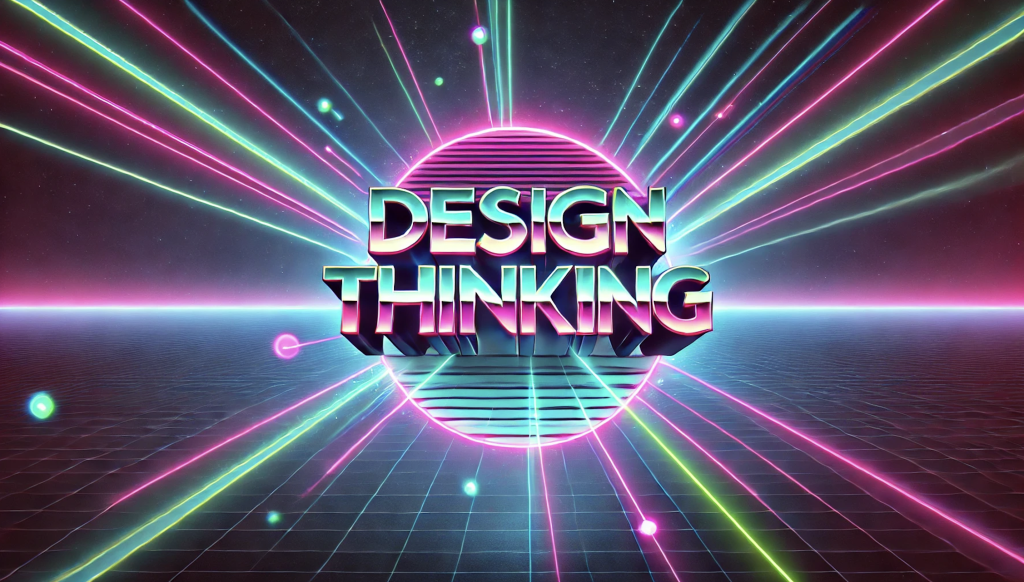At Bl3nd Design, we understand that design is about much more than creating something visually attractive. It’s about solving problems, communicating ideas, and forging emotional connections. As a graphic design agency based in Abbotsford, Fraser Valley, British Columbia, we serve clients locally, regionally, nationally, and globally. Whether designing logos, developing brand identities, or creating graphic design solutions, we embrace design thinking as a central part of our process.
Design thinking is a powerful, iterative approach that helps us develop user-centric, creative solutions tailored to the unique needs of each client. It allows us to bridge the gap between art and functionality, ensuring our designs resonate on both an aesthetic and strategic level. By using data, feedback, and constant iteration, we craft designs that work effectively in local markets like Abbotsford and the Fraser Valley, while also being flexible enough to thrive in global markets.
In this article, we’ll explore what design thinking is, how its principles guide our process, and how we apply it to logo design, brand development, and graphic design. We’ll also touch on the risks of not using design thinking in design projects and the history of design thinking.
What is Design Thinking
Design thinking is an iterative, non-linear process that focuses on understanding users’ needs, redefining problems, and developing innovative solutions. It centers around empathy, collaboration, and experimentation, enabling designers to craft solutions that are both functional and meaningful. By focusing on the human experience, design thinking leads to better, more effective outcomes—whether you’re designing a product, a service, or a visual identity.
Originally popularized in product and industrial design, design thinking has become a versatile framework applied to graphic design, branding, and even business strategy. The process typically involves several key phases: Empathy, Define, Ideate, Prototype, and Test. Importantly, it’s not a strictly linear process—teams often circle back to earlier stages, refining ideas as new insights emerge.
At Bl3nd Design, design thinking is foundational in how we approach every project. Whether creating a logo for a local business or building a full branding strategy for a global client, we use design thinking to ensure our designs solve real problems and connect deeply with their intended audience.
Principles of Design Thinking
The principles of design thinking form the backbone of our process at Bl3nd Design. These principles guide us in producing work that is empathetic, innovative, and rooted in real-world insights.
Empathy: The Human-Centered Approach
Empathy is the starting point of design thinking. It involves gaining a deep understanding of the users—the people who will engage with the design. At Bl3nd Design, this means immersing ourselves in our clients’ businesses and considering their audiences’ needs, desires, and pain points. For example, when designing for a local Abbotsford business, we ask: What do their customers value? How can we reflect these values in the design? This empathy ensures that our designs not only look great but also resonate emotionally.
Define: Clarifying the Problem
Once we’ve built an empathetic understanding, we move to the define phase. This involves synthesizing our insights into a clear, actionable problem statement. The goal is to identify the core challenge we need to solve with design. Defining the problem correctly is crucial—if we misidentify the problem, the solution will fall flat. For example, a tourism company might need a logo that conveys both local authenticity and international appeal. Defining this focus helps us ensure the design hits the mark.
Ideation: Generating Creative Solutions
In the ideation phase, we explore a wide range of creative solutions. This is where we generate numerous ideas without restrictions, exploring everything from traditional concepts to more avant-garde approaches. The goal is to think big and consider every possibility. For instance, when brainstorming a new brand identity, we may experiment with various color palettes, typography, and symbols to find the most engaging combination that reflects the brand’s message.
Prototyping: Bringing Ideas to Life
Once we’ve narrowed down the most promising ideas, we enter the prototyping phase. Here, we create tangible versions of the concepts—whether that’s digital mockups, sketches, or fully functional prototypes. These prototypes allow us to visualize and test the design, making adjustments as needed. For example, in logo design, we might prototype several variations of a logo to see how each version performs across different applications, from business cards to websites.
Testing: Refining Through Feedback
The testing phase involves sharing the prototypes with stakeholders and gathering feedback. This feedback loop is essential for identifying any potential issues and ensuring the design works effectively in real-world settings. Testing often reveals insights that weren’t apparent during the earlier phases, allowing us to refine the design further. By iterating on the feedback we receive, we fine-tune the design until it achieves the desired impact.
Iteration: Continuous Improvement
Design thinking is inherently iterative. As we gather new insights and feedback, we circle back to earlier stages to refine and improve the design. This ongoing cycle of prototyping, testing, and iteration ensures that the final product is polished, effective, and fully aligned with the user’s needs.
How to Use Design Thinking for Logo Design
A logo is one of the most essential visual elements of a brand. It needs to encapsulate a company’s values, mission, and essence in a single, memorable mark. At Bl3nd Design, we use design thinking to ensure that every logo we create is not only visually striking but also strategically effective.
Understanding the Brand’s Values and Audience
In logo design, empathy plays a critical role in helping us understand both the brand and its audience. We dive deep into what the business stands for, its core values, and the emotional connection it wants to create with its customers. For example, for a local coffee shop in Abbotsford, we’d focus on capturing the warmth, community feel, and commitment to sustainability. For a global tech company, we’d emphasize innovation, modernity, and trust.
Defining the Logo’s Purpose and Message
Once we understand the brand, we define the core problem the logo needs to solve. This might be creating a visual identity that distinguishes a brand in a competitive market, or designing a logo that conveys certain brand attributes, like trustworthiness or innovation. For a tourism company in the Fraser Valley, the logo might need to capture both local beauty and adventure, while appealing to international audiences.
Generating and Exploring Visual Concepts
During the ideation phase, we brainstorm various creative directions for the logo. This could involve experimenting with geometric shapes, organic forms, or abstract symbols, depending on the brand’s message. We also explore how different color palettes and typography can reinforce the desired emotional tone. For example, a real estate company might require a sleek, modern logo to communicate professionalism, while a craft brewery might benefit from a more playful, rustic design.
Prototyping and Testing the Logo
Once we’ve selected the best ideas, we move into the prototyping phase, where we create multiple logo variations. These prototypes allow us to see how the logo works in different formats—on business cards, websites, social media, and merchandise. We test the prototypes with the client and gather feedback to refine the design further, ensuring it’s adaptable, scalable, and versatile.
How to Use Design Thinking for Brand Design
Branding is much more than just a logo—it’s the entire visual identity of a company. From the tone and style to the colors and messaging, a brand must create a cohesive narrative that resonates with its audience. At Bl3nd Design, we use design thinking to craft brand identities that are both visually compelling and strategically aligned with the business’s goals.
Immersing in the Brand’s Story and Audience
In brand design, empathy is crucial for understanding not only the business but also its audience. We delve into the brand’s history, mission, and long-term vision. Whether designing for a local boutique or an international corporation, we ask: What story does the brand need to tell? How can we visually communicate that story in a way that resonates with its audience?
For example, a local Abbotsford-based organic farm might want to convey its commitment to sustainability, while a regional tech startup might need a brand identity that communicates innovation and forward-thinking.
Defining the Brand’s Visual and Emotional Identity
Once we understand the brand’s story, we move on to the define phase. Here, we clarify the visual and emotional tone the brand needs to convey. Does the brand need to feel playful and approachable, or should it exude professionalism and sophistication? For example, a wellness brand might aim for a serene, natural aesthetic, while a high-end real estate firm would require a polished, elegant brand identity.
Exploring Creative Directions
In the ideation phase, we experiment with various visual elements—such as color palettes, fonts, patterns, and icons—to establish the brand’s visual identity. We brainstorm multiple directions, testing how different elements come together to represent the brand. The goal is to explore a range of creative solutions, ensuring that we find the right combination of elements that will resonate with the brand’s target audience.
Prototyping and Refining the Brand Identity
The prototyping phase brings these ideas to life. We develop prototypes of the brand’s core elements—such as logos, packaging, business cards, and digital assets—allowing us to see how they work together as a cohesive identity. We then test these prototypes with stakeholders and real users to gather feedback, making any necessary adjustments before finalizing the brand identity.
How to Use Design Thinking for Graphic Design
Graphic design encompasses a wide range of projects, from print materials and packaging to web design and social media assets. Regardless of the medium, design thinking ensures that our graphic designs are not only visually engaging but also user-focused and functional.
Understanding the Project’s Objectives and Audience
In graphic design, empathy means understanding the project’s purpose and the audience it’s intended for. Whether designing an annual report, a brochure, or a website, we start by identifying how the end user will interact with the design. For instance, if we’re designing a brochure for a local farmers’ market, we focus on clarity, readability, and showcasing the vendors’ products in a way that appeals to eco-conscious consumers.
Defining the Project’s Visual Goals
Once we understand the project’s objectives, we define the visual communication goals. This could involve creating a design that highlights specific information, enhances readability, or draws attention to key features. For example, when designing an infographic for a global company, we aim to present complex data in a simple, visually compelling way that’s easy to understand at a glance.
Exploring Layouts and Visual Elements
During the ideation phase, we experiment with different layouts, typography, color schemes, and graphic elements to find the best way to convey the project’s message. This might involve sketching various layouts for a website or testing different fonts and colors for a marketing campaign. The goal is to explore multiple options to find the most effective solution.
Prototyping and Testing the Design
Once we’ve selected a promising direction, we move into prototyping, where we create mockups of the design. These prototypes allow us to visualize how the design will work across different platforms—whether it’s a printed flyer, a digital banner, or product packaging. We then test these prototypes with stakeholders to gather feedback and refine the design, ensuring it meets both aesthetic and functional goals.
Risks of Not Using Design Thinking
While the benefits of using design thinking are clear, failing to apply this approach can lead to several risks:
Misalignment with User Needs
Without a user-centered approach, designs may fail to address the real needs of the audience. This can result in designs that are visually appealing but don’t resonate emotionally or functionally with the end user, leading to disengagement or missed opportunities.
Ineffective Problem Solving
Skipping the define phase can lead to designs that don’t address the core problem, causing miscommunication or confusion. When design isn’t grounded in a clear understanding of the challenge, the final product may miss the mark entirely.
Lack of Innovation
By not fully exploring the ideation phase, design solutions may feel stale or generic. Without the freedom to experiment and generate multiple creative solutions, the final product risks being unoriginal or uninspired, failing to stand out in a competitive market.
Poor Feedback and Iteration
Without prototyping and testing, designs are less likely to adapt to real-world feedback. This can result in higher costs later on, as redesigns become necessary to fix issues that could have been caught early. Skipping this phase means missing valuable opportunities for improvement.
History and Founders of Design Thinking
The concept of design thinking has evolved significantly over the past several decades. Its origins trace back to the 1960s, but it wasn’t until the 1980s and 1990s that the methodology gained substantial traction, thanks to the efforts of key innovators and thought leaders in the fields of design, economics, and business strategy. These pioneers helped formalize design thinking as a structured, repeatable process that emphasizes problem-solving, empathy, and human-centered innovation.
Early Foundations: Herbert Simon’s Contributions
One of the earliest contributors to what we now recognize as design thinking was Herbert Simon, a Nobel Prize-winning economist and cognitive scientist. In his groundbreaking 1969 book, The Sciences of the Artificial, Simon introduced the idea that design should be viewed as a scientific process for solving complex, real-world problems. He proposed that designers should approach their work systematically, using iterative cycles of observation, reflection, and improvement. His work laid the intellectual groundwork for the development of structured design methodologies, positioning design as a discipline of problem-solving rather than mere aesthetics.
Simon’s framework emphasized the importance of deconstructing problems into smaller parts and understanding the systems at play, making his work influential in many fields, including design, artificial intelligence, and economics. His view that design involves shaping the artificial world to meet human needs became a core philosophy that continues to influence modern design thinking today.
The Role of IDEO and David Kelley
David Kelley, founder of the global design consultancy IDEO, is widely recognized for bringing design thinking into the mainstream. Kelley saw design as a tool for addressing not just visual challenges but also broader, human-centered problems across various industries. His belief that design should be about solving real-world problems, rather than focusing solely on aesthetics, became a cornerstone of IDEO’s approach.
In the 1980s and 1990s, Kelley and his team at IDEO refined the design thinking process, applying it to a diverse array of industries, from healthcare and technology to retail and manufacturing. Kelley advocated for the importance of interdisciplinary collaboration, believing that successful design should involve input from engineers, psychologists, business leaders, and designers alike. IDEO’s human-centered approach to design—focusing on empathy, iterative development, and testing—became the hallmark of the design thinking process.
Kelley’s impact extended beyond his work at IDEO. As a professor at Stanford University, he co-founded the Hasso Plattner Institute of Design, commonly referred to as the d.school. The d.school helped formalize and expand design thinking as an educational and practical framework, teaching students how to approach complex challenges in innovative ways. The school continues to play a pivotal role in training future leaders in design, business, and technology.
Tim Brown and the Global Spread of Design Thinking
Tim Brown, who succeeded David Kelley as CEO of IDEO, played a critical role in further popularizing design thinking. Brown expanded on Kelley’s work, applying design thinking beyond the traditional realms of product design and into areas like business strategy and social innovation. In his 2009 book, Change by Design, Brown articulated how organizations could use design thinking to foster innovation, create human-centered solutions, and navigate complex, systemic challenges.
Brown’s work emphasized that design thinking is not limited to designers alone. Instead, he argued that it’s a mindset and a toolset that can be used by anyone—engineers, marketers, business leaders, or social entrepreneurs—seeking to develop creative, user-centered solutions. His vision of design thinking as a framework for fostering collaborative innovation has been adopted by organizations across the globe, from tech giants like Google and Apple to healthcare institutions and government agencies.
The Hasso Plattner Institute of Design (d.school) and Its Influence
The Hasso Plattner Institute of Design at Stanford, known simply as the d.school, has been instrumental in formalizing and spreading design thinking. Co-founded by David Kelley and funded by Hasso Plattner, a German entrepreneur and co-founder of SAP, the d.school emerged as a leading educational institution focused on teaching design thinking to students from a wide range of disciplines.
The d.school’s approach emphasizes empathy, collaboration, and experimentation, offering students the tools to tackle everything from technical challenges to social problems. By integrating the principles of design thinking into the curriculum, the d.school has inspired countless businesses and institutions to adopt this methodology for their own innovation processes.
One of the d.school’s major contributions is the idea that design thinking is a scalable and adaptable process. This means it can be applied not only to individual projects but also to larger, systemic challenges. The school’s interdisciplinary teaching methods and emphasis on real-world problem-solving have helped extend design thinking’s reach far beyond the design community, impacting industries such as healthcare, education, and social entrepreneurship.
Design Thinking’s Evolution into a Global Movement
Over the past few decades, design thinking has evolved from a niche design methodology into a global movement that influences how companies, governments, and individuals approach problem-solving. The integration of empathy with creativity and systematic analysis has made design thinking a versatile and powerful tool for addressing both small-scale challenges and complex global issues.
From Herbert Simon’s early contributions to the IDEO leadership of David Kelley and Tim Brown, and through the academic influence of the d.school, design thinking has grown into a robust framework. Today, it empowers organizations and individuals to navigate uncertainty, innovate responsibly, and solve problems with the end user in mind.
Together, these pioneers have shaped design thinking into an essential tool for solving human-centered challenges in the modern world, ensuring that innovation remains grounded in empathy, collaboration, and creativity.
Closing Thoughts
At Bl3nd Design, design thinking is more than a methodology—it’s the foundation of our approach to logo design, brand development, and graphic design. By emphasizing empathy, creativity, and iterative problem-solving, we create designs that are not only visually compelling but also strategically aligned with our clients’ needs.
Through data-driven insights, iterative refinement, and collaborative problem-solving, we deliver designs that resonate with users and achieve the goals of our clients, whether they’re based in Abbotsford, Fraser Valley, or operating on a global scale.
In today’s competitive landscape, ignoring the principles of design thinking means missing out on the opportunity to create truly impactful designs that stand the test of time. Whether you’re looking to build a local brand or expand globally, Bl3nd Design is here to help you craft designs that engage, inspire, and perform.
Design Thinking Resources
Interaction Design Foundation
Harvard University
Stanford University
Nielsen Norman Group
Mckinsey and Company
Massachusetts Institute of Technology
Smashing Magazine
Adobe Blog
Figma Blog
Canva Blog
Asana Blog
Shopify Blog
IBM Blog





















